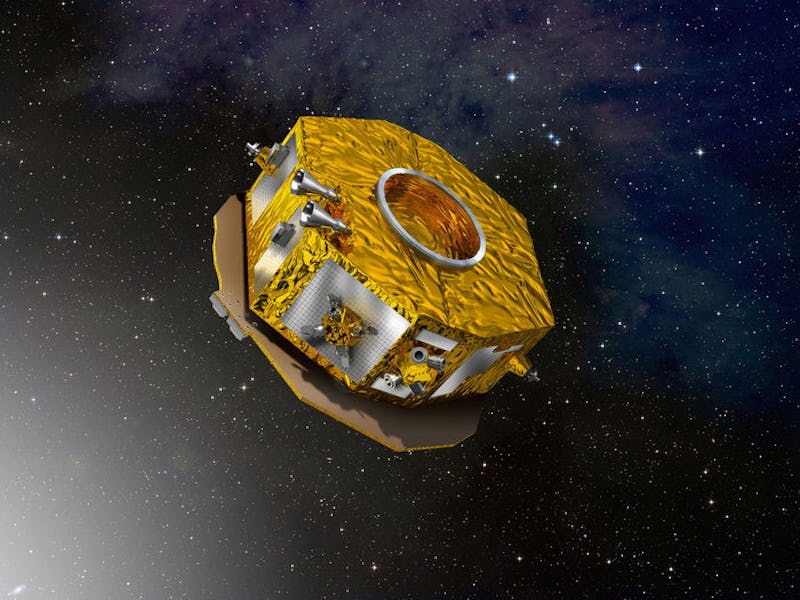How Gravitational Waves Really Work
The recently launched LISA Pathfinder will detect and study gravitational waves in space.

Rejoice all you visual learners: If the physics behind the workings of gravitational space waves, a.k.a. ripples in spacetime, is a head-scratching topic, the European Space Agency uploaded today this new video that breaks it all down.
Using a table cloth, marble, and a cube made of tungsten (which sits in for an actual cube of gold-platinum), scientist Paul McNamara explains that the not-so-flat universe makes for an environment in which gravitational waves can occur.
The European Space Agency’s LISA Pathfinder lifted off on December 3.
How this all works is a point of importance for McNamara and his ESA team because on December 3 they launched the LISA Pathfinder on a Vega rocket from Europe’s spaceport in Kourou, French Guiana. The Pathfinder is now on the way to demonstrate technology for observing low-frequency gravitational waves from space.
If the LISA Pathfinder is able to prove that these waves ripple through space it’s going to have a huge impact on space and physics research. Why? Because it would provide evidence for a little thing called Albert Einstein’s theory of general relativity.
On December 2, 1915, Einstein predicted that gravitational waves are ripples in the fabric of spacetime and that everything that is in the universe can cause it to change its shape.
While space news seems to be dominated by Mars probes and the space race of private industries, proving one of the most famous theories of physics would be pretty damn cool.